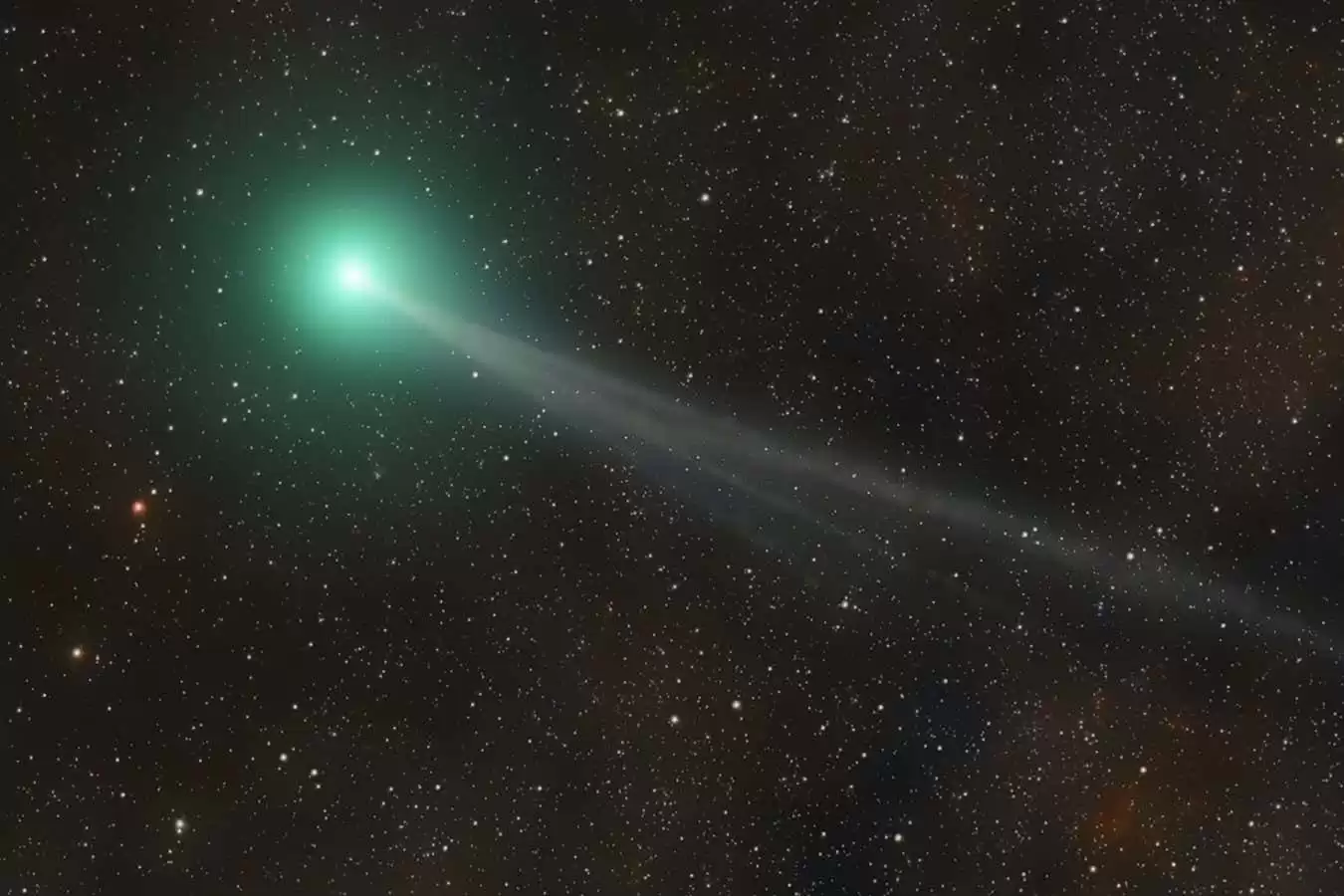Spotting green comet Nishimura in the skies this week
Comet Nishimura, discovered a month ago, will make its closest approach to the sun, giving people in the northern hemisphere a great chance of a sighting.
Get ready for a celestial spectacle! Comet Nishimura, also known as C/2023 P1, is making its way towards the sun, giving those in the northern hemisphere a fantastic opportunity to witness its beauty. Discovered just a month ago by amateur astronomer Hideo Nishimura, this comet is a rare find, as we typically have more time to prepare for the arrival of these cosmic wonders.
For those residing in the northern hemisphere, the best chance to catch a glimpse of Comet Nishimura is in the mornings before sunrise until September 17th. During this time, the comet's green tail will be visible, creating a mesmerizing sight as it approaches the sun. However, as the comet gets closer to the sun, it will become more challenging to see, so make sure to seize the opportunity while you can.
To locate Comet Nishimura, look towards the north-east about an hour before sunrise. You'll find the comet low in the sky, nestled within the constellation Leo. For precise positioning based on your location, consider using a stargazing app to guide you.
If you're struggling to spot the comet with the naked eye, don't fret. Grab a pair of binoculars, and you should be able to discern the shape of the comet's tail. Although it may appear as a fuzzy blob to the naked eye, using binoculars will enhance your viewing experience. As Don Pollacco from the University of Warwick suggests, "With comets, you just never know." So, keep your eyes peeled and be prepared for a breathtaking sight.
Comet Nishimura's distinctive green hue is a result of the gas surrounding its nucleus, known as the coma. This coma contains a rare form of carbon gas called diatomic carbon, which consists of two carbon atoms bound together. This unique composition gives the comet its vibrant green color, adding to its allure.
Comets, like Nishimura, are composed of ice and rock and originate from the Oort cloud, a region in the outer solar system. As they approach the sun, the ice on these celestial bodies transforms into gas, creating a tail-like appearance. This fascinating phenomenon makes it challenging to predict the visibility of comets from Earth, as each one behaves differently.
While comets visible to the naked eye are not exceedingly rare, Nishimura's visit is truly exceptional. Its orbit around the sun takes a staggering 437 years, meaning it won't grace our skies again until the year 2423. So, take advantage of this once-in-a-lifetime opportunity to witness the splendor of Comet Nishimura.
Whether you're an avid stargazer or simply appreciate the wonders of the universe, make sure to set your alarm clocks and venture outside to witness this extraordinary celestial event. Remember, the cosmos always has surprises in store for us, and Comet Nishimura is no exception. So, keep your eyes on the skies and embrace the beauty that awaits you.











Comments on Spotting green comet Nishimura in the skies this week